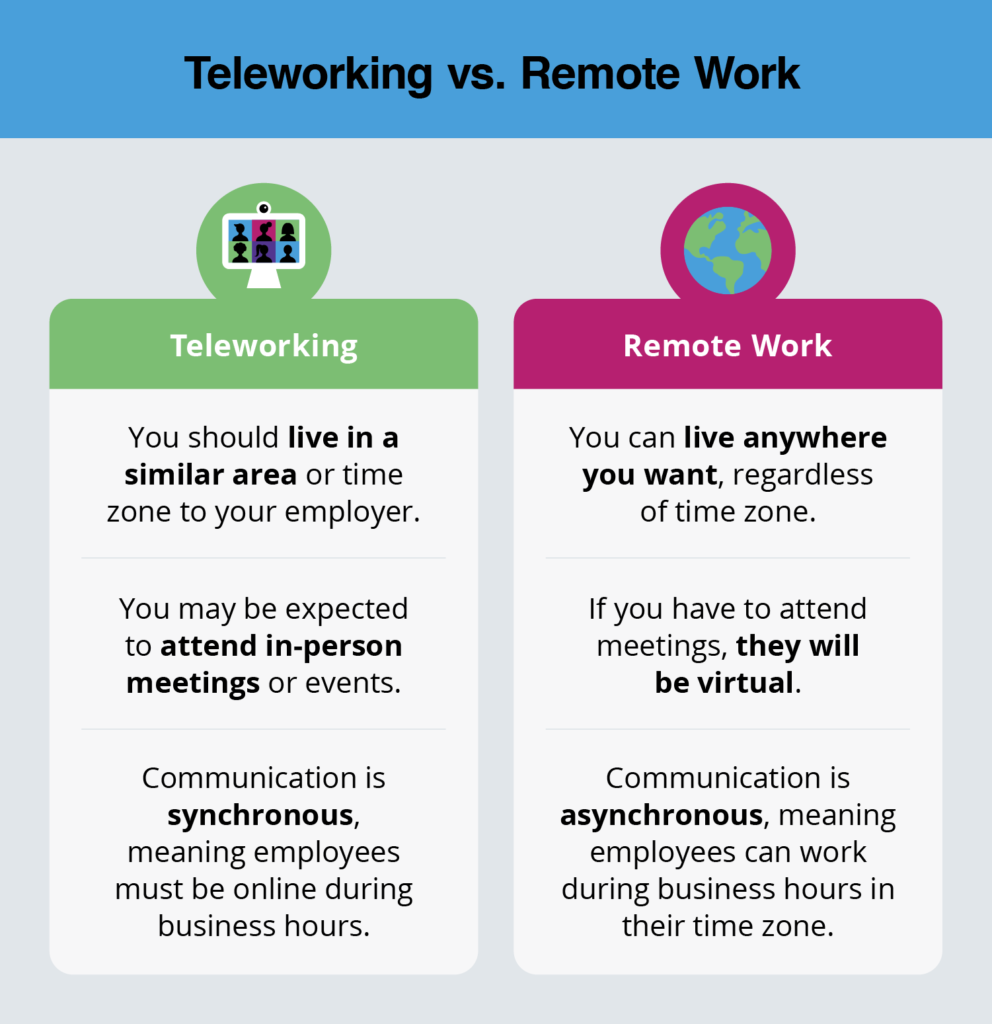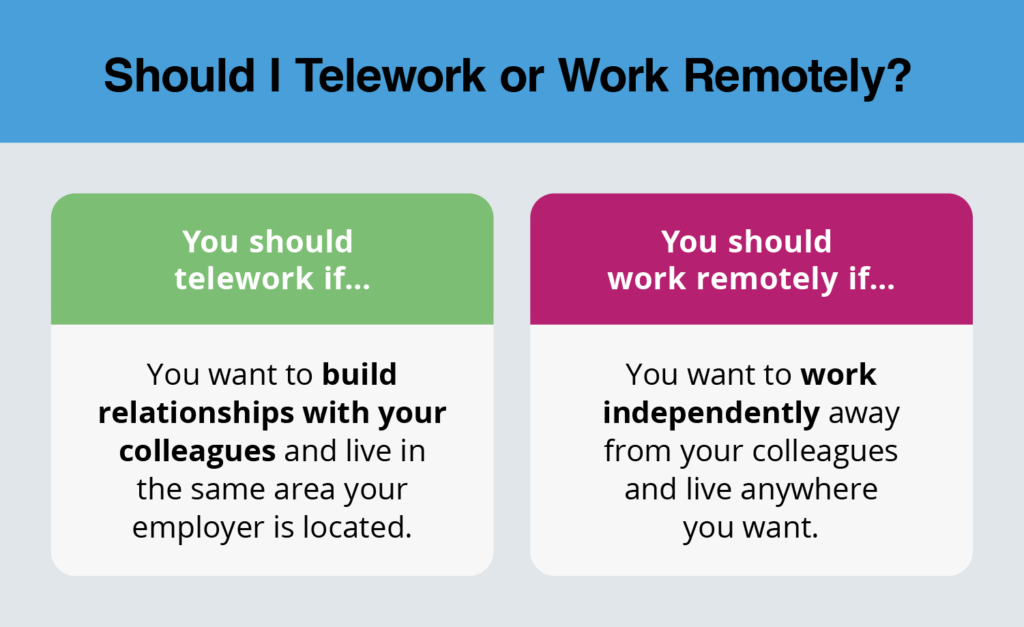Today’s workforce has the unique ability to log on from anywhere. That means the coffee shop down the road, a coworking space in a new city, or even an Airbnb in a different country.
With the growing adoption of remote work and evolution of virtual communication and project management tools, many employees are looking to work outside of the office at least one day per week. Some, though, are looking for a position that will allow them to work from home — or anywhere else — full-time.
With different styles of remote work and ways to do it, you might be confused about exactly which model works for you. For example, you might be looking for a job where you’re fully independent and don’t have frequent contact with your coworkers, or you might want to work from home but still get to know your colleagues.
That’s why we’re going to break down telework vs. remote work to give you clarity into which model might work for you.

What Does Working Remote Mean?
Remote work — also sometimes called working from anywhere — is a working arrangement in which employees do not report to an office. So remote working means that you can work from your home, a coffee shop, a library, or anywhere throughout the globe that has a stable internet connection.
Remote workers don’t necessarily have to be located near their physical offices. In some cases, companies are fully remote and don’t have an office to report to at all.
Remote working may also be asynchronous, especially if there are global employees involved. This means that employees typically aren’t expected to attend meetings outside of their time zone, instantly answer messages, or be online during the same hours. This model works for people who are dispersed geographically throughout different time zones.
Who Can Work Remotely?
There are many types of remote jobs — so really, anyone can work remotely. Adopting a remote work policy also opens companies up to the possibilities of hiring globally. Without the constraints of a physical office, employers can look for talent in other locations, while employees can secure their dream job no matter where they’re located.
What Does Telework Mean?
Teleworking is a remote work model where employees are allowed to work from an approved alternate location, like their homes or a coworking space, but they are expected to be online during normal business hours and in contact with their colleagues.
Let’s break down the meaning of teleworking. Think of it this way: The prefix “tele-” means “from a distance.” So the technical definition of teleworking is “working from a distance.”
Communication for teleworking employees is usually synchronous, meaning employees will be expected to be online during typical business hours and log on to meetings. So while it isn’t necessarily a rule that employees need to be located in the same time zone to make a teleworking model work, it makes it easier.
For example: Imagine you live in Dublin, Ireland, and the rest of your team lives in Tokyo, Japan. If your team scheduled a 10 a.m. meeting, you’d have to wake up at 2 a.m. to attend.
Who Can Telework?
Like remote work, many people in positions that span industries are able to telework. However, because teleworking usually involves synchronous communication, it will be easier for employees who live in the same area as the rest of their colleagues to get started.

Telecommuting vs. Remote Work: Which Is Right For You?
If you’re looking to go remote, you should discuss the logistics with your employer. In some cases, they may let you telework, or work from home with the caveat that you’ll have to be available during regular business hours. If you’re looking for a position where you can travel and live abroad, a fully remote role may be best for you.
Determining which model is right for you depends on how much communication and contact you want with your coworkers, where you want to live, and how productive you can be remotely.
Similarities
At the end of the day, teleworking and remote work are both models that allow employees to work from outside of an office building.
Similarities between teleworking and remote work include:
- Employees can work from home, a coffee shop, or any approved remote work location.
- Employees will have to communicate virtually with tools like email, instant messaging platforms, and video conferencing apps.
Differences
Exactly how independent you are may vary depending on which remote working model your office adopts.
Differences between teleworking and remote work include:
- Employees who telework have to log on during regular business hours for their employer’s time zone.
- Remote work communication may be asynchronous, while telework is usually synchronous.
- Remote workers may be located anywhere in the globe.
- Teleworkers may sometimes be asked to attend in-person meetings or social events, or report to the office.
Ready to Work From Anywhere?
Making the leap to remote work can be exciting. But figuring out the logistics can be a little less so — especially if you’re debating between telework vs. remote work. If you’re looking to work remotely, a global partner can help you navigate local labor regulations and get paid compliantly.
Contact us to see how we can help with your remote work journey.



